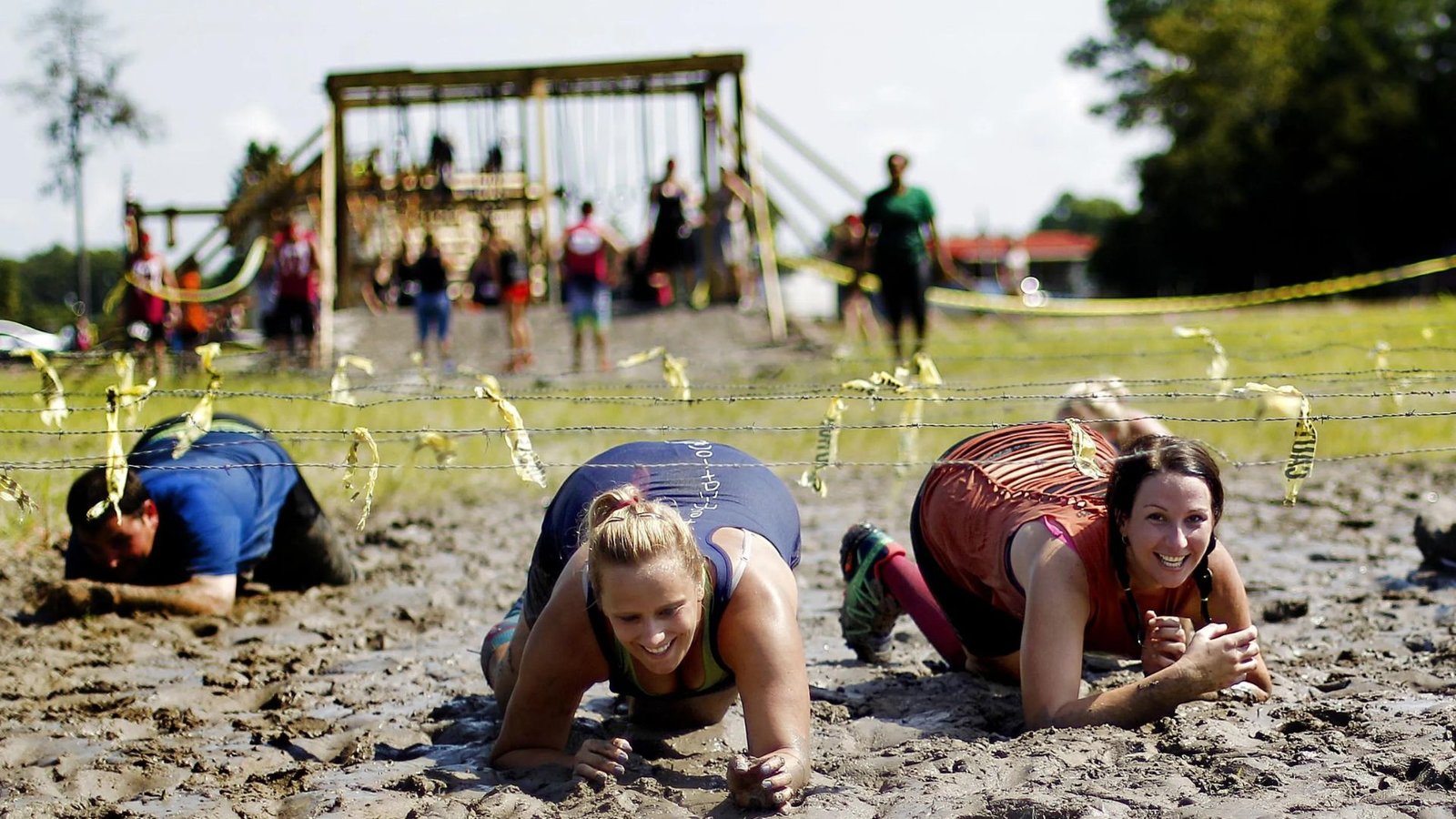Tips for Tackling Mud Runs in Obstacle Races
Mud runs in obstacle races offer thrilling challenges that combine running with various physical obstacles, often set in muddy and rugged terrains. Successfully navigating these courses requires preparation, strategy, and a positive mindset. In this article, we’ll give you essential tips to help you conquer mud runs and obstacle races with confidence.
Understanding Mud Runs in Obstacle Races
Mud runs in obstacle races are competitive events where participants traverse through a series of natural and man-made obstacles, including mud pits, walls, ropes, and water crossings. These races test participants’ strength, agility, endurance, and mental toughness as they overcome challenges while navigating through muddy terrain.

Training Tips for Mud Runs in Obstacle Races
Build Strength and Endurance
Training for mud runs should include exercises that build overall strength and endurance. Incorporate activities such as running, weightlifting, bodyweight exercises (like push-ups and squats), and interval training to prepare your body for the physical demands of the race.
Practice Obstacle-Specific Skills
Familiarize yourself with common obstacles found in mud runs, such as crawling under barbed wire, climbing walls, and traversing monkey bars. Dedicate training sessions to practising these skills to improve technique and efficiency during the race.
Train in Various Terrain and Conditions
Simulate race conditions during training by running on different types of terrain, including mud, gravel, and uneven surfaces. Training in varied conditions prepares you mentally and physically for the challenges posed by the race course.
Preparing Mentally and Physically
Hydrate and Fuel Properly
Stay hydrated leading up to the race and fuel your body with balanced meals rich in carbohydrates, proteins, and healthy fats. Proper nutrition supports energy levels and aids in muscle recovery before and after the event.
Dress Appropriately for the Race
Choose clothing and footwear designed for mud runs that offer comfort, durability, and traction. Wear moisture-wicking apparel to manage sweat and mud effectively throughout the race.
Pace Yourself and Conserve Energy
Maintain a steady pace at the beginning of the race to conserve energy for challenging obstacles later on. Listen to your body’s cues and adjust your speed based on terrain and obstacle difficulty.
Strategies for Tackling Mud Runs
Assess Obstacles Before Attempting
Before tackling each obstacle, take a moment to assess its structure, requirements, and potential challenges. Visualize your approach and mentally prepare to execute the necessary technique effectively.
Utilize Teamwork and Support
In team-based mud runs, leverage teamwork to overcome obstacles more efficiently. Communicate with teammates, offer assistance when needed, and collaborate to navigate through challenging sections of the course.
Embrace the Mud and Have Fun
Mud runs are as much about enjoyment as they are about competition. Embrace the muddy conditions, laugh off setbacks, and maintain a positive attitude throughout the race. Celebrate your achievements and camaraderie with fellow participants.
Safety and Preparation Tips
Familiarize Yourself with Event Rules and Safety Guidelines
Review event rules, safety guidelines, and regulations before race day to understand specific requirements and expectations. Familiarize yourself with emergency procedures and hydration stations along the course.
Carry Essential Gear and Hydration
Pack essentials such as energy gels, snacks, hydration packs, and sunscreen for longer races. Ensure gear is securely fastened and easily accessible during the race without hindering movement or agility.
Advanced Training Techniques
Incorporate Cross-Training Activities
Include cross-training activities such as swimming, cycling, and yoga to complement your running and strength training regimen. Cross-training enhances overall fitness, reduces injury risk, and improves flexibility and muscle endurance.
Practice Race-Specific Scenarios
Simulate race conditions by practicing specific scenarios such as running intervals followed immediately by obstacle attempts. Incorporate mud or simulate muddy conditions during training to adapt to the challenging terrain.
Conclusion
Mud runs in obstacle races provide an exhilarating experience that tests your physical abilities and mental resilience. By following these tips, including training for strength and endurance, practising obstacle-specific skills, preparing mentally and physically, and strategizing during the race, you can approach mud runs with confidence and successfully conquer the challenges they present.



